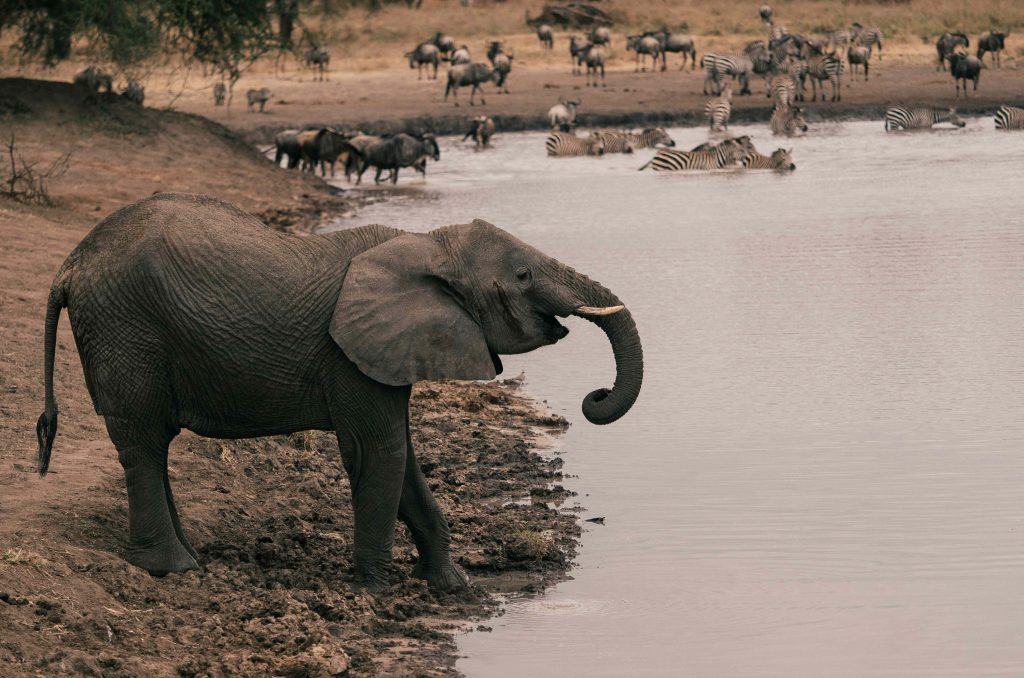Tarangire National Park
Tarangire National Park is a national park in Tanzania’s Manyara Region. The name originates from the permanent Tarangire River that crosses the park.
It covers an area of approximately 2,850 square kilometers (1,100 square miles.) The landscape is composed of granitic ridges, river valley, and swamps.
The River is also known as the life-line of the park particularly in the dry season when most of the region is totally dry. There are a number of large swamps that feed off some of its tributaries however, these are usually dry for most of the year. The Tarangire River is the primary source of fresh water for wild animals.
The Tarangire park is usually very dry, but its vegetation is much more green especially with lots of elephant grass, vast areas with mixed Acacia woodlands and giant baobab tree that can live up to 600 years and storing between 300-900 liters of water.
This park is home to one of the largeset elephant populations in Africa with several herds of up to 300 members per herd. In addition, there are large numbers of impalas, elands, buffaloes, giraffes, Bohor reedbuck, Coke’s hartebeest, Thompson’s gazelle and many more.
Other common animals in the Tarangire are leopards, lions, hyenas, and cheetah.
There are up to 600 species of birds within the Tarangire.

Climate
The best time to visit the park is the dry season from June to October, when many animals in search of water are concentrated around the Tarangire River.
The wet seasons are from March to May (heavy rains) and from November to December (small rains). It usually rains in the afternoon or during the night.
The days are never too hot, while the evening and morning are cooler.
Temperature:
- From January to March and from October to December: Min. 17 °C, Max 30 °C.
- From April to September: Min. 15 °C, Max 25 °C.
Tarangire National Park can be reached from Arusha in 2-3 hours. Lake Manyara National Park is 70
kilometer drive from Tarangire.
About Tarangire National Park
- Size: 2850 sq. km.
- Location: Northern Tanzania
- Distance from Arusha: 118 km southwest (2-3 Hours)
- Sign up for our Newsletter
- Get travel inspiration, destination guides, and expert tips delivered straight to your inbox.
- By signing up for our mailing list, you agree to our privacy policy
- Terms and Conditions
- Privacy Policy